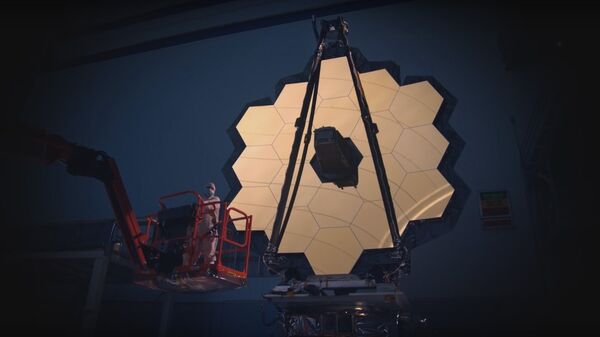WASHINGTON (Sputnik) — Computer sensors forced the shut-down of a machine testing whether the James Webb space telescope could withstand the vibration expected during a scheduled October 2018 launch, according to a press release from the National Aeronautics and Space Administration (NASA) on Tuesday.
"During the vibration testing on Dec. 3 at NASA Goddard, accelerometers attached to the telescope detected unexpected responses and consequently the test shut itself down to protect the hardware," the release stated.
The shutdown occurred a fraction of a second after a "higher-than-expected response" was detected at a particular frequency of vibration, about one note lower than the lowest note on a piano, the release explained.
The telescope must pass multiple tests before it can be sent into space, according to the release.
The James Webb telescope, named after an early NASA administrator, is designed to observe distant objects in space that are beyond the range of the existing Hubble space telescope, including direct observation of planets orbiting distant stars.


